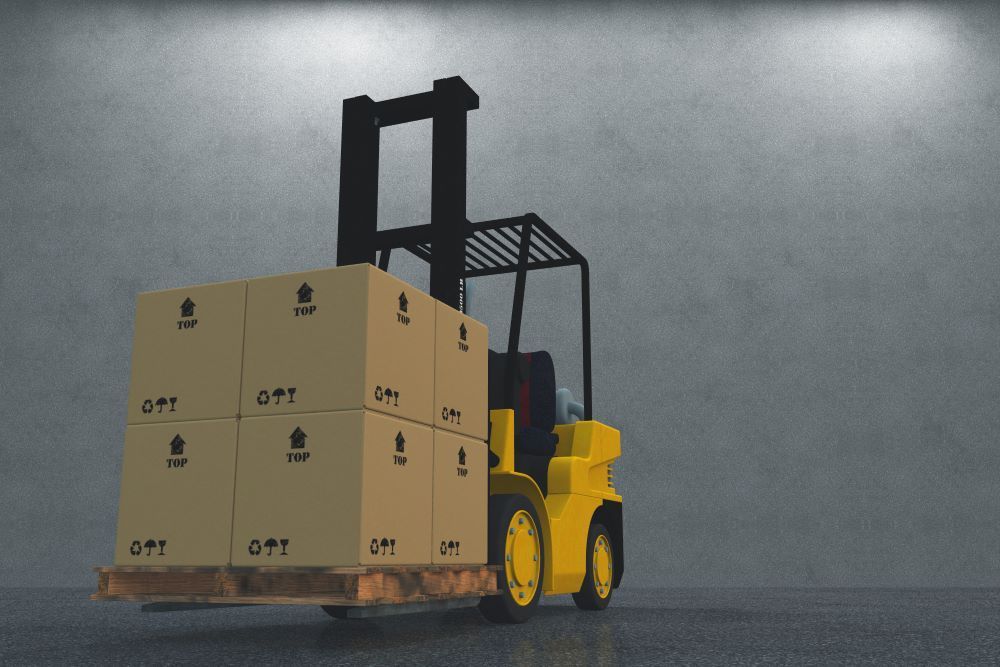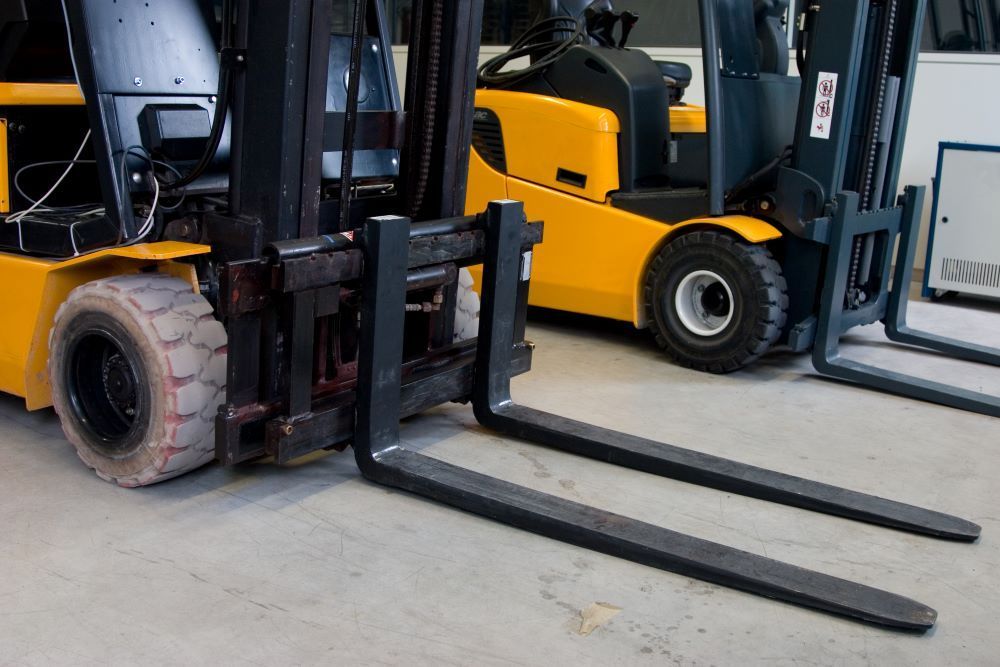What is a Counterbalance Forklift?

The basic components of a counterbalance forklift include:
- The frame (which includes the counterweight).
- A mast (to raise and lower the load).
- Forks (to carry the load).
- A power source (which can be electric, diesel, or gas).
Read more about the parts of a forklift...
Counterbalance forklifts are one of the most common types of forklifts used in various industries for material handling tasks, such as loading and unloading goods, transporting materials across short distances, and stacking pallets.
There are different models of counterbalance forklifts available to suit different working environments and tasks, including those designed for indoor use with electric power sources to minimise emissions and more robust models for outdoor use powered by diesel or gas.
Counterbalance Forklift - Models & Brands
Counterbalance forklift models vary widely across manufacturers, each offering unique features tailored to different operational needs. Below are some notable models from well-known brands, highlighting their diversity in power source, capacity, and specialised features:
List of Services
-
Toyota 8FGU25List Item 1
A highly popular internal combustion counterbalance forklift from Toyota, known for its reliability and versatility. It offers a lifting capacity of around 5,000 lbs and is suitable for a wide range of material handling applications.
-
Linde E20-E35List Item 3
A series of electric counterbalance trucks by Linde, offering capacities from 4,000 to 7,700 lbs. These models are known for their energy efficiency, precision, and innovative safety features.
-
Hyster S50CTList Item 4
A part of Hyster's S series, the S50CT is an internal combustion counterbalance forklift designed for indoor and outdoor use, with a capacity of up to 5,000 lbs. It combines fuel efficiency with durability.
-
Yale GLC050VX
This model is known for its versatility and performance. It's an internal combustion counterbalance forklift with a capacity of around 5,000 lbs, suitable for a wide range of applications.
-
Jungheinrich EFG 220
An electric counterbalance forklift offering capacities up to 5,000 lbs. It's known for its energy efficiency, ergonomic design, and comprehensive safety features.
-
Mitsubishi FG25N
A part of the FG series, this internal combustion counterbalance forklift has a capacity of around 5,000 lbs. It's recognised for its robustness and ease of maintenance.
-
Komatsu FG15HT-20
Offering a lifting capacity of approximately 3,000 lbs, this model is designed for high torque and performance. It's an internal combustion counterbalance forklift suitable for a variety of applications.
-
Doosan G25E-5
Part of the G series, this model is an internal combustion counterbalance forklift with a capacity of around 5,000 lbs. It's designed for high performance and fuel efficiency.
-
CAT GP25N
A reliable and powerful internal combustion counterbalance forklift from Caterpillar with a lifting capacity of around 5,000 lbs. It's known for its durability and ease of operation.
Heavy Lift Forklifts in Melbourne offer a wide range of counterbalance forklifts for hire and new or refurbished counterbalance range for sale.
How to Operate a Counterbalance Forklift Safely

Operating a counterbalance forklift requires adherence to specific procedures and guidelines to prevent accidents and ensure the safety of the operator and others in the vicinity. Here are the key steps and safety considerations for operating a counterbalance forklift.
Pre-Operational Inspection
- Inspect the Lift Truck: Before the beginning of each shift, inspect the forklift for any damage or issues that might affect its safe operation. This includes checking the fuel source, engine compartment, fluid levels, tyres, wheels, mast, forks, and hydraulic cylinders and ensuring the manufacturer's nameplate is legible and securely fastened.
- Check for Leaks: Pay attention to the fuel connectors and hoses for any leaks, and ensure that the propane cylinder (if applicable) is secure and the pressure relief valve is pointing upwards.
- Inspect Tyres and Wheels: Ensure tyres are in good condition without significant cuts or objects embedded. For pneumatic tyres, check the air pressure.
Understanding Forklift Mechanics and Load Handling
- Balance and Stability: Recognise the forklift operates like a teeter-totter, with the counterweight balancing the load. The stability triangle concept is crucial—keeping the combined centre of gravity within this triangle ensures stability.
- Load Handling: Understand the importance of load distribution and the centre of gravity. Every load has a different centre of gravity, and the combined centre of gravity (forklift and load) should always remain within the stability triangle to prevent tip-over.
- Lifting Capacity: Always adhere to the forklift's nameplate specifications regarding maximum weight and lifting height. Using attachments can affect the forklift's capacity and require adjustments to operation practices.
Operating the Forklift
- Traveling: Ensure the load is stable and secure before moving. Keep the load low to the ground and tilted back towards the mast for stability. When visibility is obstructed, travel in reverse or use a spotter.
- Turning: Make turns slowly and smoothly to avoid tipping. Avoid sharp or sudden turns, especially when carrying loads or operating at high speeds.
- Speed: Maintain a safe speed according to the working environment and the forklift's load. High speeds increase the risk of accidents and loss of control.
Safety Procedures
- Seatbelts: Always wear a seatbelt to reduce the risk of injury in case of a tip-over.
- Tip-Over Protocol: In case of a tip-over, stay inside the forklift, hold onto the steering wheel, brace your feet, and lean away from the fall to maximise your chances of survival.
- Maintenance: Report any issues or damages found during the pre-operational inspection. Never operate a forklift that is deemed unsafe.
Specific Scenarios
- Loading Docks: Be aware of the risks associated with loading docks, including trailer separation and dock walk. Ensure trailers are securely chocked before loading or unloading.
- Pedestrian Traffic: Always give pedestrians the right of way, use the horn at blind spots, and maintain a safe distance from them.
Post-Operational Procedures
- Secure the Forklift: Lower the forks to the ground, set the parking brake, turn off the engine, and remove the key. If applicable, close the fuel valve to prevent leaks.
By following these guidelines, based on the comprehensive overview provided in the transcript, operators can significantly reduce the risk of accidents and ensure a safe working environment for everyone involved.
Need A forklift?
Forklift rentals are cost-effective solutions, and you can consider hiring to meet any seasonal peaks.





